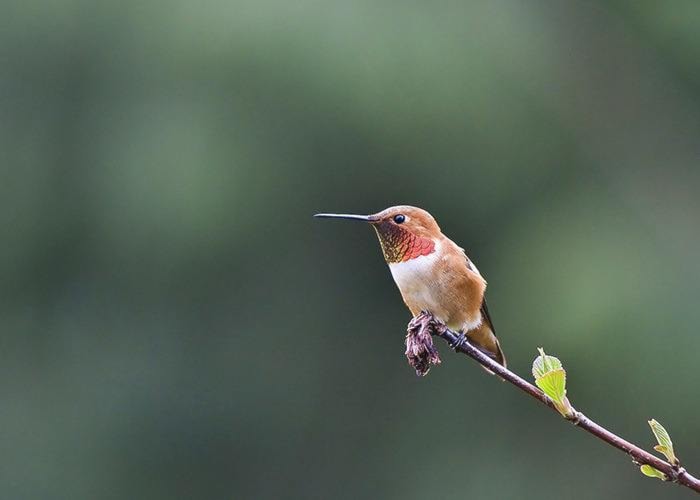By all appearances, Jeff Laverton is your quintessential average guy – a husband, a father, a machinist by trade and an avid amateur photographer whose first camera was one of those tiny 110s back in the day.
But once you get him talking about his favourite local species – the hummingbird – be prepared to step back and be overwhelmed by a barrage of amazing factoids.
For example, did you know that hummingbirds are the smallest birds in the world (specifically, the Bee Hummingbird of Cuba at 2” long), but have the largest brain mass at 4.2 per cent of their body weight.
Their wings flap at an average of 38 to 78 beats per second, but when diving, that increases to 200, which can translate into speeds of up to 60 miles an hour – which is faster than the well-worn Datsun B210 I used to drive back in the late ’70s.
That passion for this diminutive beast is evident in his photography (which accompanies the article today) and the way he has designed his Maple Ridge townhouse garden, which backs onto a green belt.
It all began with a neighbor’s hummingbird feeder, which Jeff noticed was frequented the most during cooler overcast weather and abandoned when the sun was out in favour of flower foraging.
With this in mind, he began devising ways to attract hummingbirds to his own garden by planting perennials and shrubs that provide nectar.
His best success to date has been the ‘King Edward VII’ red-flowering currant (Ribes sanguineum) in his backyard, which always seems to be in bloom just as the migrating Rufous hummingbirds return in spring.
Other indigenous plants that are a good source of nectar include Oregon grape (Mahonia), salmonberry, western Columbine (Aquilegia formosa), our native bleeding heart and indian plum (Oemleria).
We have two species of hummingbirds that frequent coastal British Columbia, with a third, the purple-headed Costa’s (Calypte costae) having been sighted here only a few times.
The reddish-brown Rufous hummingbird (Selasphorus rufus) spends its springs and summers here and overwinters by migrating down to the Gulf Coast and Mexico.
We are at the extreme northern range of the Anna’s Hummingbird (Calypte anna), which remains here in winter – although back in the 1940s it was limited to overwintering in California, but has since moved northward with the proliferation of feeders and non-native winter-flowering shrubs such as Mahonia x media ‘Charity’, Viburnum x bodnantense ‘Dawn’, Erica carnea, Camellia sasanqua, Arbutus unedo (Strawberry Bush), hellebores and early blooming flowering cherries such as Prunus x subhirtella ‘Autumnalis’.
Jeff is particularly fascinated by the Anna’s struggle for survival, as this species has a high metabolism and needs to feed constantly in order to survive the cold temperatures. They do this by eating any available insects and following the sapsucker tracks found on tree trunks, where they can access the oozing sweet secretions.
Keeping your feeder out all winter and unthawed in periods of extreme cold is equally important, and Jeff suggests duct taping a hand warmer to the feeder to keep the nectar flowing, as this will last up to seven hours. You can even lend a helping hand come nesting season (which starts as early as the end of January for Anna’s) by hanging an empty suet feeder filled with small bits of string, yarn, dry moss or lichen for them to use for building their nests.
To see this in action, visit www.youtube.com and type ‘Hummingbird Live Cam’ into the search engine to view Eric Pittman’s (of Esquimalt) enlightening video feed.
Mike Lascelle is a local nursery manager and gardening author. Email him at hebe_acer@hotmail.com.
